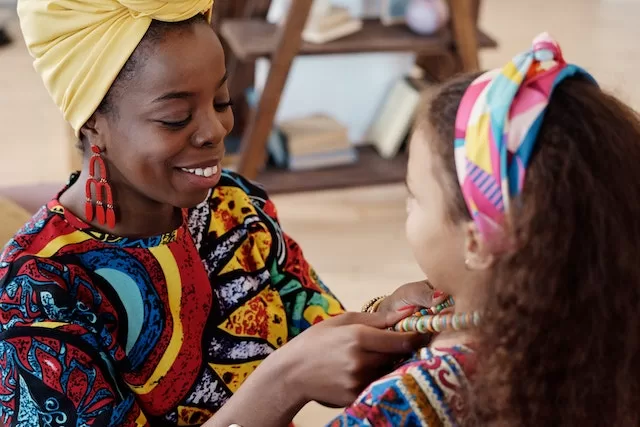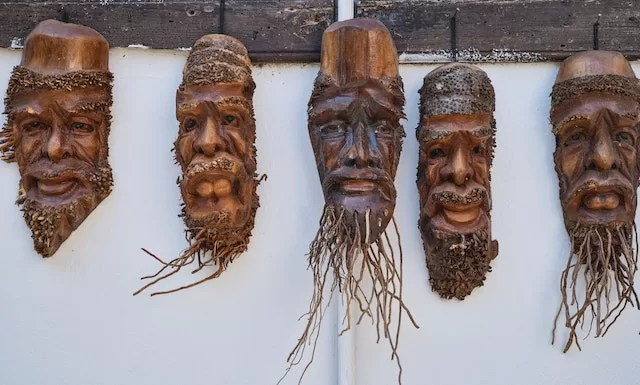For many, the first thing that comes to mind when it comes to Kenya is wildlife and safaris. But visitors should also keep in mind this country´s rich artistic and cultural heritage - thanks to its more than 70 ethnic groups such as the Kikuyu, Kamba, Luhya, Maasai, and Kalenjin - both to witness (such as tribal dances) and to buy as mementos of their trip here (esecially masks, figurines, and other forms of sculpture). This beautiful country keeps the spirit of its ancestors alive through every move, every breath, and every piece of handmade art. There’s something so special about every tiny piece of wood that comes out of the hands of Kenyan artisans. Art in Kenya often depicts scenes from regular life or cultural practices. As you know, Kenya was a British colony for a long time (from 1920 to 1963, to be precise). But, not once was the spirit of the people broken during this time. Most conquered countries throughout history reflect their sorrow by making more toned-down and dark art. Not the Kenyans. The majority of the artwork found here is characterized by bold colors and vivid patterns. They rebelled against the darkness and always dreamed of independence. Once they reached it, it became the day of history they’re proud of the most. Right now, those vivid colors serve as a reminder to celebrate and be grateful for every breath and every day they live under the sun.
Vibrant Jewelry Is an Essential Part of Kenya´s Traditional Arts and Crafts
A great part of Kenyan culture is jewelry. Necklaces and bracelets made from beads are widely available at shops and markets. But, interestingly, women are not the only ones using jewelry—quite the opposite. For example, soldiers of the Samburu people of north-central Kenya use hairstyles, jewelry, and ochre body painting to exquisitely delicate effect - highly valued among the Samburu, who put a premium on physical beauty and decoration (which in turn leads them to be dubbed “Butterflies” by neighboring tribes). Beaded jewelry is especially prevalent, especially among the Maasai, Rendille, Samburu, and Turkana tribes of the Great Rift Valley, and some of it quite elaborate and intricate, with colors and patterns conveying various kinds of symbolism.
Margot Kiser
Tattoos for You
The temporary, non-invasive adornment of the body using dye made from the henna plant is most often associated with India and parts of the Middle East such as Morocco and Egypt. But it´s also prized by various cultures in Africa, including Kenya, where henna tattooing is having something of a renaissance, often with flowery motifs. Most farmers’ markets have henna tattoo artists, and getting a henna tattoo (which fades with exfoliation after one to three weeks) is an excellent way to experience the culture and enjoy the holidays here.
In Kenya, Music Is Life
A central part of tribal ceremonies, Kenyan tribal dances and music sometimes use wooden drums wrapped with animal skin and sold in local markets. Dancing and singing aren´t just fun – it’s a way to live life being happy for what the future brings, and it’s a way to respect the past and all that’s already been. If you, for example, came here and said that you don’t know how to dance or how to sing (which is a common thing to say out of fear of being judged), Kenyans would look at you as if you said that you don’t know how to breathe. The concept of not knowing how to lose your body to the rhythm is unknown to them. Everybody contributes to making wonderful melodies - which by the way have also inspired Westerners have to incorporate them into their own music. So don’t be afraid to participate in the dancing around the fire (if you get invited by locals, of course), as it's one of the best cultural experiences you can have here.
On another front, modern music is also a big part of the culture in cities such as Nairobi and Mombasa, with genres including taarab from Zanzibar, Congolese soukrous, and Kenya´s own benga and kalpop, alsong with imports such as Europop, funk, hip hop, reggae, soul, and rock.
Evocative Tribal Masks
During tribal ceremonies, masks show respect for the tribe’s ancient ancestors. Adding hair and jewels on a mask is a way of showing respect for the deceased. The gods, animals, spirits, and even ancestors are typically represented through the masks worn by the participants in these rituals. You´ll be able to pick up your own mask mementos at markets throughout the country - you can of course pick whatever appeals to you, or if you have a guide, ask his/her advice.
Wood and Soapstone Carving
Animals, humans, masks, images from nature, and elaborate designs and patterns are just some of the subjects hand-carved into not just masks but figurines, as well as bowls, spoons, cups, and other household items. The Akamba tribe has a longstanding reputation as some of Kenya’s finest woodworkers and carvers, and the Island of Lamu is the hub of coastal carving, where Bajun tribal members are said to have inspired Arab artists to produce a distinctive fusion of styles. Meanwhile, some ethnic groups, such as the Kisii of the Tabaka Hills in the west, specialize in carving figurines and other objects in soapstone (above), which is composed of compressed talc. And you don’t even have to go far afield to find handmade treasures, many city markets - and even hotels in Nairobi and elsewhere offer traditional woodwork for sale.
Tambako The Jaguar
The Clothes Which Make the Kenyan
Many Kenyans these days wear Western-style clothing, and Arab-style garments are also worn by some among the 11 percent who are Muslim. But with some tribal groups, traditional dress is still more common. Among the Masai, for example, women still often don colorful wraps called kanga, set off by bead necklaces, and men are known for wearing red-checked, blanket-like shuka (red being considered the color of strength). Also known for their distinctive clothing, headdresses and accessories are the Turkana people of the north and the Samburu (closely related to the Masai). Many of these, too, may be purchased in regional markets for visitors interested in accessorizing their own apparel with a Kenyan tribal touch.


Comments
I actually have a Samburu beaded necklace and it´s one of my favorite pieces.